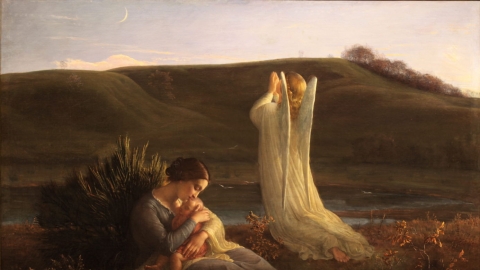St. Peter's Basilica: A Naked Man Climbs Onto the Main Altar

Two days after a naked man ascended the high altar of St. Peter's Basilica after escaping security services, the basilica's archpriest celebrated a penitential rite on Saturday as required by canon law in cases where sacred places are desecrated.
According to Vatican News, the unidentified man is a Polish national who approached the high altar on June 1, when the basilica was about to close. He quickly undressed and climbed onto the altar. Photos posted online show the words “Save the Children of Ukraine” written in marker on his back.
“As the officers of the Vatican Gendarmerie approached, the man did not resist but cooperated and he was taken to the Vatican police station,” the Vatican news site said. “After verifying his identity, the man was handed over to the Italian police, in accordance with the treaty between Italy and the Holy See, and received an expulsion order from Italian territory.”
The main altar of the basilica, where the Pope celebrates Mass, is called the “altar of confession.” Accessible by climbing seven steps, the marble altar is located directly above the tomb of Saint Peter and is crowned with the large Baroque-style bronze baldachin by Gian Lorenzo Bernini.
Vatican News reported that Cardinal Mauro Gambetti, archpriest of the basilica, celebrated a penitential rite on Saturday at noon. Canons from the chapter of St. Peter's Papal Basilica and several worshipers also attended.
According to ACI Prensa, the cardinal emphasized during the act of reparation that “it is the structure of sin that conditions people’s hearts and minds. . . . This structure of sin is the one that feeds wars, the one that inhabits our society,” he added.
Referring to the June 1 desecration, the cardinal pointed out that it was this “structure of sin” that caused the man “to make an inappropriate and deplorable act,” ACI Prensa reported. “We are here to ask the Lord for forgiveness,” he added.
The Code of Canon Law and the Bishops' Ceremonial provide guidance for situations where altars or other sacred spaces are violated.
Canon no. 1211 stipulates: “Sacred places are profaned by gravely offensive actions which are committed there to the scandal of the faithful and which, in the judgment of the local Ordinary, are so serious and contrary to the holiness of the place that it is not permitted to celebrate worship there until the injury has been remedied by the penitential rite provided for in the liturgical books.”
The Bishops Ceremonial, n° 1070-1092, specifies that the offenses likely to desecrate a Church are those which “seriously dishonor the sacred mysteries, in particular the Eucharistic species, and are committed as a sign of contempt for the Church, or are offenses which seriously undermine the dignity of the person and of society.”
Related links
(Sources : Vatican news/CNA – FSSPX.Actualités)
Illustration : Photo 175858190 / Religion © Bakusova | Dreamstime.com





